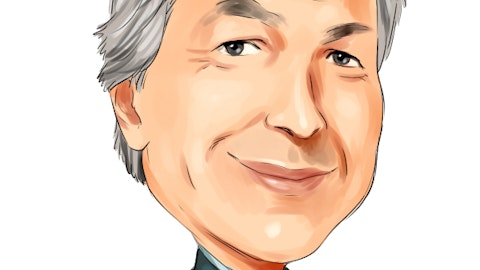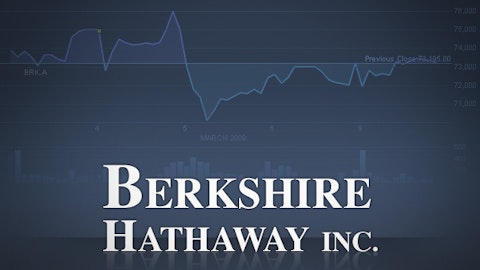
Seth Klarman and Warren Buffett. Sources: 100WHF and Aaron Friedman.
Next year, the Federal Reserve will have a new chairman. It may also have a new policy: a tapering of quantitative easing.
Uncertainty around the future of interest rates — and the Federal Reserve as a whole — causes investors to make interesting, and sometimes dangerous, assumptions. Last week, a group of economists published a note outlining their recent studies.
Here’s what economists have to say: If Larry Summers becomes the new Federal Reserve chairman, it may shave as much as 0.75% from GDP and slow job creation by as many as 500,000 jobs over the next two years, according to their report.
What can you really know about the economy’s future?
Everyone has an opinion on Wall Street, and this is doubly true when politics plays into financial markets. Bernanke’s successor will be selected by President Obama, which makes the future Fed chairman all the more interesting.
But what can we really know about the Fed and interest rates going forward? Can we really know whether or not Larry Summers as Fed chief would cut potential GDP by 0.75%?
I went back to one of my favorite books by Seth Klarman, Margin of Safety — a book that may be more popular if it weren’t for its $1,000-plus price tag.
On page 127, I found very classic, very Foolish-style wisdom on interest rates and forecasting:
I believe there is no “correct” level of rates. They are what the market says they are, and no one can predict where they are headed.
High interest rates lead to changes in the economy that are precursors to lower interest rates and vice versa. Knowing this does not help one make particularly accurate forecasts, however, for it is almost impossible to envision the economic cycle until after the fact.
A more timely quote comes from Warren Buffett at the most recent Berkshire Hathaway Inc. (NYSE:BRK.A) annual meeting: “QE is like watching a good movie, because I don’t know how it will end,” Buffett remarked.
Shouldn’t great investors have an answer?
Since 1982, Seth Klarman’s Baupost Group has managed annual returns of roughly 19% per year, despite the fact that his fund often holds cash positions equal to 25% or more of assets under management.
Warren Buffett, of course, managed 20% annual returns well into the 1990s. Now, his portfolio at Berkshire Hathaway Inc. (NYSE:BRK-A) is so large that it’s beginning to show signs that it may only roughly match the returns of the stock market as a whole.
Shouldn’t great investors have unique insight into the future?
Obviously, the best investors have some insight into the future. But where their insight lies rarely fits with the broad economy or interest rate forecasting. It lies in business analysis — knowing a business inside and out.
Great investors are those who identify great businesses trading at cheap prices. It’s simple, really — and the odds and ends like wars with Syria, interest rate policy, or the next Fed chief have very little to do with long-term results because they affect all businesses. Our goal is to find those that are relatively better by comparison.
One of Klarman’s biggest positions is American International Group Inc (NYSE:AIG). Despite gaining 37% this year, American International Group Inc (NYSE:AIG) still trades at 0.72 times tangible book value. You can buy it for less than the value of its balance sheet, potentially giving investors a huge margin of safety. All else equal, an insurance company trading for less than tangible book is a better wager than one trading at 5 times book value.
Likewise, Warren Buffett continues to add to his stable of great brands. He recently acquired Heinz in a deal with 3G Capital. The fact is, ketchup, mustard, and TGI Friday’s potato skins will continue to sell, regardless of who is Fed chairman, or whether or not the 10-year yield ticks past 3%.
Buffett continues to hold a position in Wells Fargo & Co (NYSE:WFC) because no matter what happens in the next two years, it’s a stable, simple bank that should generate profits for many decades. Most impressively, Buffett has no problems buying this stock at higher and higher prices, buying it first in 1990 for a dividend-and-split-adjusted price of less than $3 per share.
Foolish investing in action
The Motley Fool celebrates the idea of long-term investing — buying great brands and businesses to hold for years… perhaps forever. Given recent calamity surrounding an end to quantitative easing or a new Fed chief, it’s important to step back and think.
Think as if you’d never get the chance to sell your shares to someone else — that dividends and the compounding of book value would be your only way to cash out.
If you seek out stocks with this mind-set, you’ll stop caring what the market thinks day to day, and likely invest in better stocks than you otherwise might. Most importantly, you’ll stop caring about the unknowable — rates, presidents, wars, and Fed chiefs, all things that serve as distractions, not investment theses.
The article The Fed: What Great Investors Have to Say originally appeared on Fool.com and is written by Jordan Wathen.
Fool contributor Jordan Wathen has no position in any stocks mentioned. The Motley Fool recommends American International Group (NYSE:AIG), Berkshire Hathaway, and Wells Fargo. The Motley Fool owns shares of American International Group, Berkshire Hathaway, and Wells Fargo and (NYSE:WFC) has the following options: long January 2014 $25 calls on American International Group.
Copyright © 1995 – 2013 The Motley Fool, LLC. All rights reserved. The Motley Fool has a disclosure policy.




